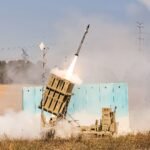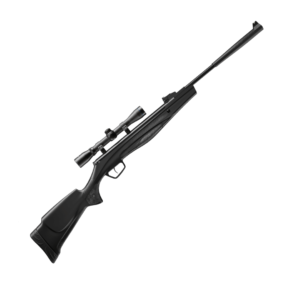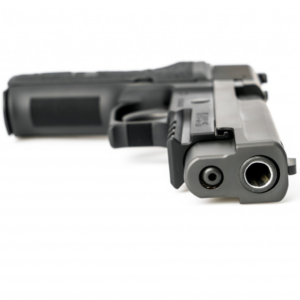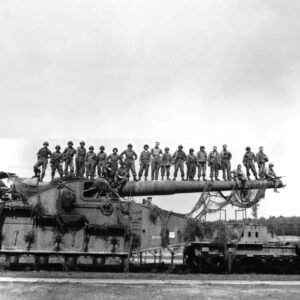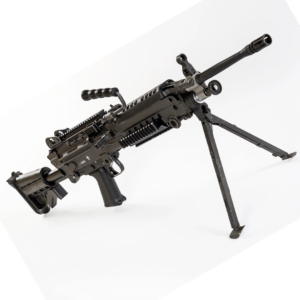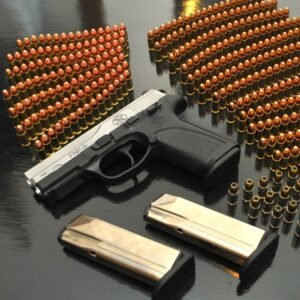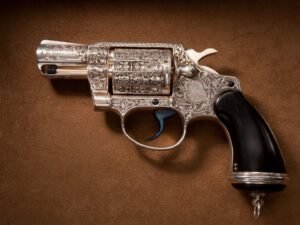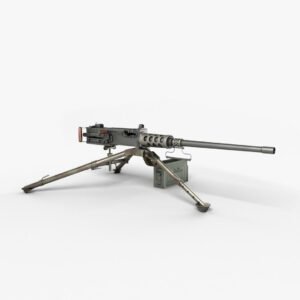The AK-47: Unveiling the Legacy of the World’s Most Notorious and Deadly Gun

I. AK47 Deadly Gun Introduction
The AK-47 Deadly Gun is one of the most iconic firearms in the history of modern warfare. It has left an indelible mark on military strategy, geopolitics, and popular culture. This assault rifle, designed by Mikhail Kalashnikov, revolutionized the concept of small arms with its reliability, simplicity, and deadly efficiency. Let’s delve into the history, mechanics, and impact of this legendary weapon.
II. History and Development:
The AK-47, short for Avtomat Kalashnikova 1947, was developed in the aftermath of World War II. Its creator, Mikhail Kalashnikov, sought to design a rifle that would be simple, durable, and effective in the hands of both trained soldiers and guerrilla fighters. The first prototype of the AK-47 Gun was completed in 1947 and by 1949. It became the standard issue assault rifle for the Soviet Armed Forces.
III. Mechanics and Design
The AK-47 is known for its robust construction and simple design, making it relatively easy to manufacture, maintain, and operate even in harsh environments. Its gas-operated, rotating bolt mechanism, combined with its 7.62×39mm cartridge, allows for effective firing with a cyclic rate of around 600 rounds per minute. The rifle’s distinct curved magazine, typically holding 30 rounds, enhances its usability and portability on the battlefield.

IV. Design & Development: The Most Deadly Weponary in The World
The design and development of the AK-47, one of the most influential firearms in modern history, reflect a combination of innovative engineering and practical considerations. Here is an in-depth exploration of its design and development:
A. AK-47 Deadly Gun Design Considerations:
Mikhail Kalashnikov’s design philosophy for the AK-47 prioritized simplicity, reliability, and ease of maintenance. The rifle was intended to be effective in a wide range of environments and conditions, from the bitter cold of the Russian winter to the sweltering heat of desert climates.
- Gas-operated System: The AK-47 utilizes a gas-operated, long-stroke piston system, which harnesses the energy generated from the ignited gunpowder to cycle the weapon’s action. This design ensured reliable functioning even in adverse conditions, such as mud, sand, or extreme temperatures.
- Robust Construction: The AK-47’s design incorporates rugged materials such as steel and wood, enhancing its durability and making it less susceptible to damage from rough handling or environmental factors.
- Straightforward Mechanism: The rifle’s straightforward operating mechanism simplified training for new users, allowing conscripted soldiers with minimal training to quickly learn how to operate and maintain the firearm.
B. AK-47 Deadly Gun Development Timeline:
The development of the AK-47 can be outlined in the following key phases:
- 1940s: Mikhail Kalashnikov, drawing upon his experience as a soldier in the Red Army during World War II, began designing a new rifle that would be more effective and reliable than the existing Soviet weaponry.
- Late 1940s: Kalashnikov’s prototype, the AK-47, underwent rigorous testing and evaluations, ultimately leading to its adoption by the Soviet military in 1949.
- 1950s to 1960s: The AK-47’s popularity expanded beyond the Soviet Union, as various countries sought to produce their own versions of the rifle. This period saw the rifle being widely adopted in conflicts and uprisings across different continents.
- Late 20th Century to Present: The AK-47’s design has undergone various modifications and improvements, leading to the development of several derivatives and modern variants, including the AKM, AK-74, and AK-100 series, each incorporating technological advancements and addressing the evolving needs of contemporary warfare.
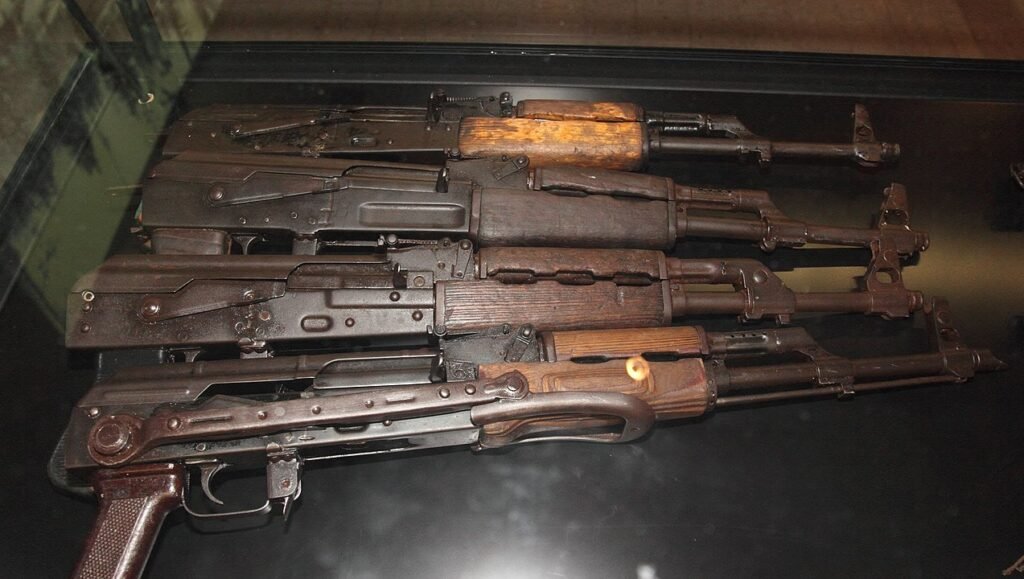
C The AK-47 Deadly Gun Key Specification:
| Specification | Details |
| Designer | Mikhail Kalashnikov |
| Date of Origin | 1947 |
| Cartridge | 7.62×39mm |
| Action | Gas-operated, rotating bolt |
| Rate of Fire | Approximately 600 rounds per minute |
| Magazine Capacity | 30 rounds |
| Weight | 4.3 kg (9.5 lb) empty |
| Length | 870 mm (34.3 in) |
| Effective Firing Range | 400 meters (440 yards) |
| Muzzle Velocity | 715 m/s (2,350 ft/s) |
VI. Controversies and Global Impact:
Despite its widespread use, the AK-47 has been at the center of numerous ethical and political debates. Its availability in conflict zones has contributed to the proliferation of small arms. It has been linked to various instances of violence, terrorism, and armed conflicts worldwide. Efforts to control the trafficking and use of the AK-47 and other similar firearms remain significant challenges.

VII. AK-47 Deadly Gun War History
The AK-47 has been a pivotal weapon in numerous armed conflicts and wars around the world since its introduction in 1947. Its impact on the history of warfare is significant, shaping the outcomes of various conflicts and revolutions. Here’s a comprehensive overview of the AK-47’s role in some of the most notable conflicts and wars in recent history:
A. The Cold War (1947-1991):
During the Cold War, the AK-47 became the symbol of the Soviet Union’s military might. It was widely used by Soviet-aligned countries and insurgent groups backed by the Soviet Union in conflicts across the globe. This included wars in Vietnam, Afghanistan, and various African countries where the Soviet Union and the United States vied for influence.
B. Vietnam War (1955-1975):
The AK-47 played a crucial role in the hands of the North Vietnamese Army and the Viet Cong during the Vietnam War. Its reliability, ease of use, and low production cost made it an ideal weapon for guerrilla warfare in the dense jungles of Vietnam. Its widespread use contributed to the overall effectiveness of the Viet Cong’s military tactics, challenging the United States’ military superiority and significantly impacting the outcome of the war.
C. Afghan-Soviet War (1979-1989):
The AK-47 was a staple weapon used by Soviet forces and the Afghan mujahideen during the Afghan-Soviet War. The conflict highlighted the rifle’s adaptability in rugged terrains and its effectiveness in asymmetric warfare. The mujahideen’s widespread use of the AK-47, coupled with support from the United States and other Western powers, played a pivotal role in the eventual withdrawal of Soviet forces from Afghanistan.
D. African Conflicts and Civil Wars:
The AK-47 has been a prevalent weapon in numerous African conflicts and civil wars, including those in Angola, Mozambique, and the Democratic Republic of the Congo. Its availability, ease of use, and relatively low cost have made it a weapon of choice for various militias, rebel groups, and government forces, contributing to the prolonged and devastating nature of these conflicts.
E. Contemporary Conflicts and Terrorism:
In recent decades, the AK-47 has continued to play a significant role in various contemporary conflicts and acts of terrorism worldwide. Its widespread availability on the black market has made it a weapon of choice for non-state actors and terrorist organizations, contributing to the perpetuation of armed conflicts and acts of violence in regions such as the Middle East, Central Asia, and parts of Africa.
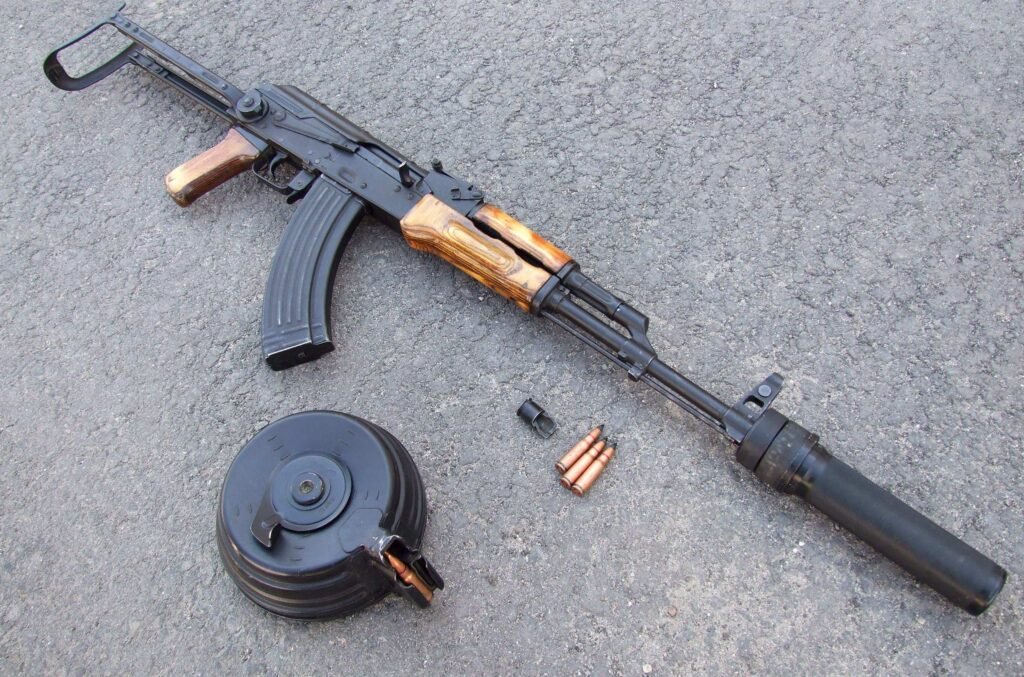
VIII. AK-47 Gun Variants
The AK-47 has several variants and derivatives that have been developed over the years, each with specific modifications and improvements to meet the requirements of different users and combat scenarios.
A. AKM (Avtomat Kalashnikova Modernizirovanniy):
Introduced in the 1950s, the AKM is an updated version of the original AK-47. It features stamped parts instead of milled components, making it lighter and more cost-effective to produce. The AKM also includes a slanted muzzle brake and a new bayonet design.
B. AK-74:
Developed in the 1970s, the AK-74 is chambered for the smaller and faster 5.45×39mm cartridge. It features a different stock, a muzzle brake, and a distinctive magazine design. The AK-74 has a flatter trajectory and less recoil compared to the AK-47, making it more controllable during automatic fire.
C. AK-101 and AK-103:
These are modern derivatives of the AK-47 developed by the Russian manufacturer Kalashnikov Concern. The AK-101 is chambered for the NATO standard 5.56×45mm cartridge, while the AK-103 is chambered for the 7.62×39mm cartridge, similar to the original AK-47. These rifles incorporate modern features such as Picatinny rails for accessories and improved ergonomics.
D. AK-12:
The AK-12 is a more recent iteration designed to meet the requirements of modern military forces. It features a Picatinny rail system for optics and accessories, a side-folding stock, and improved ergonomics. The AK-12 is chambered for the 5.45×39mm and 7.62×39mm cartridges, retaining the versatility of its predecessors while incorporating contemporary design elements.
E. Type 56:
The Type 56 is a Chinese variant of the AK-47, produced in both military and civilian configurations. It closely resembles the original Soviet AK-47 but may feature some modifications to suit Chinese production standards and requirements.
F. Rk 62:
The Rk 62 is a Finnish variant of the AK-47, developed to meet the specific needs of the Finnish Defence Forces. It incorporates certain modifications, such as a strengthened receiver and improved sights, to adapt to the demanding Arctic conditions of Finland.
G. AK-47S:
The AK-47S is a short-barreled variant designed for specialized use in close-quarters combat. It is often used by special forces and law enforcement units due to its compact size and maneuverability in tight spaces.
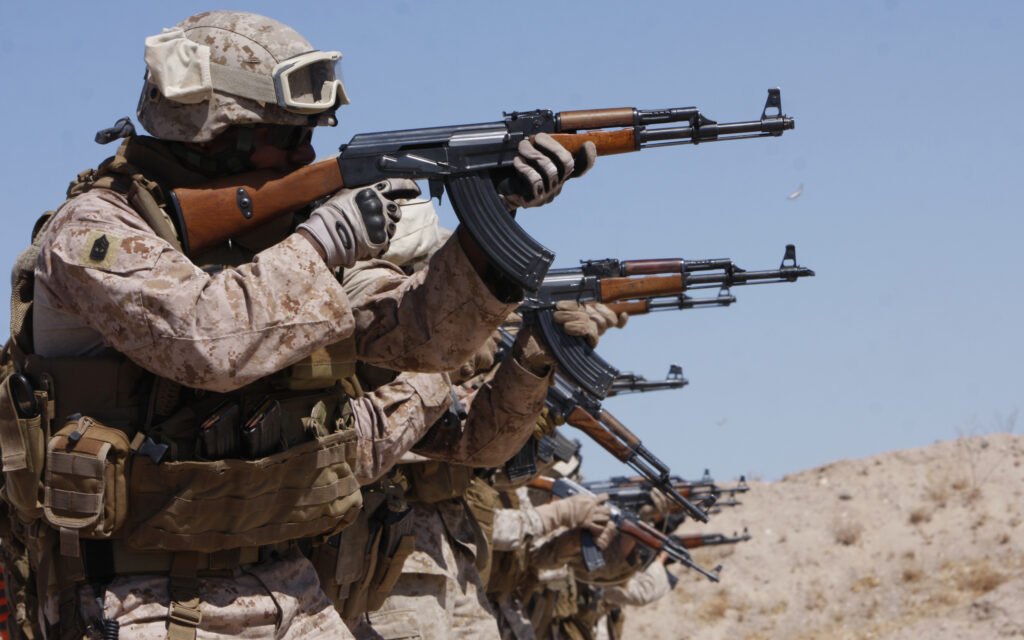
IX. AK-47 Deadly Weapon Testing
The testing and development of the AK-47 occurred over several years, with significant milestones marking its progression from concept to production. Here is an overview of the key testing phases and years associated with the AK-47’s development:
A. Early Prototyping of AK-47 Deadly Gun (1945-1946):
Mikhail Kalashnikov began working on the design of the AK-47 shortly after World War II. Initial prototypes were developed and tested during this period, with a focus on creating a reliable and robust rifle that could withstand various battlefield conditions.
B. Formal Testing and Evaluation (1946-1948):
The early AK-47 prototypes underwent rigorous testing and evaluation by the Soviet military to assess their performance, durability, and suitability for mass production. Feedback from these tests was instrumental in refining the design and functionality of the rifle.
C. AK-47 Deadly Gun Official Adoption and Production (1949):
In 1949, the AK-47 was officially adopted by the Soviet Armed Forces as the standard issue assault rifle. This marked a significant milestone in the development of the rifle, solidifying its position as the primary firearm for Soviet infantry troops and contributing to its widespread production and global proliferation in the following years.

D. Refinements and Improvements (1950s-1960s):
Throughout the 1950s and 1960s, the AK-47 underwent various refinements and improvements based on feedback from combat experience and technological advancements. These modifications led to the development of the AKM (Avtomat Kalashnikova Modernizirovanniy) and other variants, which enhanced the rifle’s reliability, durability, and production efficiency.
E. Global Testing and Deployment (1960s-1980s):
The AK-47, along with its variants. It was extensively tested and deployed in various conflicts and wars during the latter half of the 20th century. Its performance in diverse combat environments, ranging from jungles to deserts, was further validated. Its effectiveness solidified its reputation as a reliable and adaptable firearm.
F. Continued Modernization (1990s-Present):
In the decades following its initial development. The AK-47 has continued to undergo modernization and adaptation to meet the evolving needs of contemporary military forces. This process has led to the introduction of more advanced variants, such as the AK-74, AK-101, and AK-103. Each incorporates improvements in ergonomics, materials, and accessory compatibility.
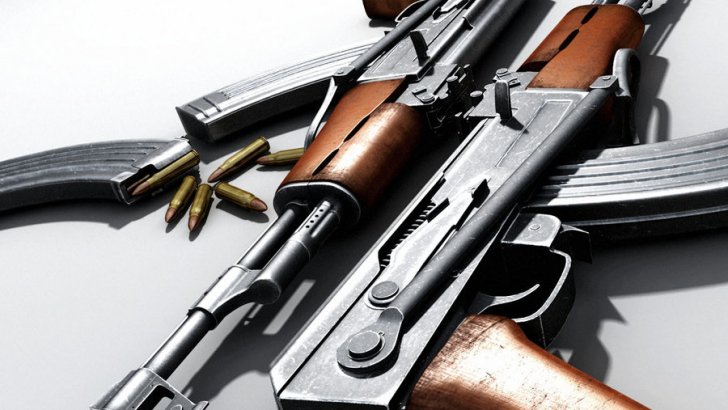
You Know About That: World’s Top 5 Gun Brands: Largest Manufacturers & The .600 Nitro Express Zeliska: Power in Your Hands.


